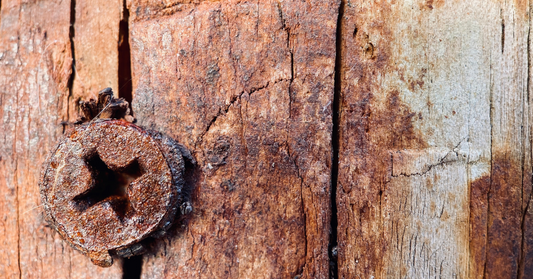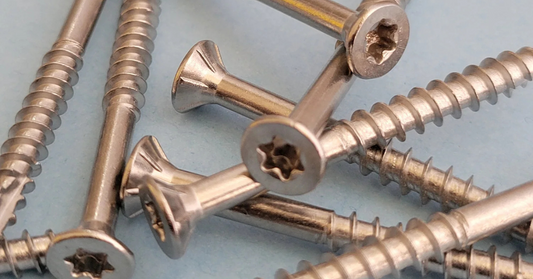Your 20-year-old roof might look perfectly fine with no visible signs of wear and tear, but waiting too long to replace your roof makes it more expensive to replace when you finally get it replaced.
Roofing materials are getting pricier almost every month these days. If you're living in an area where there's serious hail or windy weather, it might be best to hold off until after storm season. But usually, it's a good idea to replace your roof now rather than wait.
How Often Should the Roof Be Replaced?
Typically, a roof can last about 20 to 30 years, but it depends on a few different factors. It depends on how it's installed, the quality of the shingles you choose, and the type of roof.
Here's a quick rundown of how long roofs made from different materials usually last and other things to consider in choosing which one to use for roof replacement:
|
Type of Roof |
Average Lifespan |
Typically Used In |
Average Cost (per sq ft) |
|
Asphalt Shingles |
15-30 years |
All coasts |
$3.50 - $5.50 |
|
Clay/Cement Tile |
50-100 years |
West Coast, Gulf Coast |
$10 - $18 |
|
Slate |
100-125 years |
East Coast |
$15 - $30 |
|
Wood Shingles |
15-50 years |
West Coast |
$6.50 - $11 |
|
Wood Shakes |
35-40 years |
West Coast |
$6 - $9 |
|
Metal (Aluminum/Steel) |
50 years |
All coasts |
$6 - $12 |
|
Metal (Copper/Zinc) |
Up to 100 years |
All coasts (less common) |
$15 - $30 |
What time of year is best to replace a roof?
The best time to replace your roof depends on a few things like the cost, the weather, and when your contractor is available.
Spring and fall are great times for roof replacement because of the mild weather. Winter tends to be a slow time for roofing contractors, so you might find them offering discounts or lower rates.
If you're not in a rush for a roof replacement, it can be a good idea to wait for the right season. In emergencies, it's important to prioritize immediate replacement, no matter the season.
How do you know when your roof needs to be replaced?
Your roof doesn’t come with a check engine light like your car does. If you spot a leak or water stains around fasteners, it’s probably been going on for a while and might be too late to fix with minimal costs.
Here are 8 signs that your roof needs replacing:
1. Your roof is over 20 years old.
Most experts think that a typical roof is good for about 20 years. A roof that's 20 years old doesn't necessarily mean it needs to be replaced right away, but it's definitely a good time to start saving for replacing your roof. If you wait too long, you might end up with bigger problems like water getting in and damage to the structure, and those repairs can cost you a lot.
Does insurance cover roof replacement?
Most insurance companies offer comprehensive coverage for roofs that are 10 years old or newer. Most insurers are likely to cover roofs that are around 15 to 20 years old, but it depends on the type of material and how well the roof is holding up.
After 20 years, it gets tougher to find complete coverage from most standard insurance companies.
Tips:
- If you're not quite sure how old your roof is, check the building permits that your local building authority has on file.
- When the insurance company comes to check if your roof is damaged, make sure to have the roofing company representative there too to point out the damage.
2. The shingles start curling up or under.
 Your shingles need to be flat on the roof, creating a shield against the weather. When shingles start to curl, either up at the edges (cupping) or down (clawing), it's an early warning sign, but it’s not as urgent as the other issues on this list.
Your shingles need to be flat on the roof, creating a shield against the weather. When shingles start to curl, either up at the edges (cupping) or down (clawing), it's an early warning sign, but it’s not as urgent as the other issues on this list.
Repair vs. Replace: You can reroof just the damaged part, but it's important to talk to a skilled roofer to find out what caused the problem and what the best solution is.
3. Moss on your roof
 If you see moss growing on your roof, it might mean that your roof needs to be replaced. Moss appears when moisture mixes with debris on your roof, showing that there might be problems with drainage or maintenance.
If you see moss growing on your roof, it might mean that your roof needs to be replaced. Moss appears when moisture mixes with debris on your roof, showing that there might be problems with drainage or maintenance.
Moss can shorten the lifespan of your shingles. Moss on your roof means that the granules on the shingles aren't doing their job anymore, which lets the moss penetrate down the decking.
Repair vs. Replace: You can try to remove moss yourself, but that won't solve the main issue and could actually harm the shingles more.
Brushing or scraping moss can take off the protective granules on shingles, which might reduce their lifespan. Even after you scrape off the moss, the roots of the moss might have already created pathways for water to seep in.
4. Missing shingles or tiles
 A clear sign that your roof might need to be replaced is missing shingles. Look at every possible angle, like from the streets, sidewalks, and even your neighbors' yards (if they say it's okay, of course). Check if there are any large patches that appear to have blown off.
A clear sign that your roof might need to be replaced is missing shingles. Look at every possible angle, like from the streets, sidewalks, and even your neighbors' yards (if they say it's okay, of course). Check if there are any large patches that appear to have blown off.
Even though a few missing tiles here and there might not seem like a big deal, a specific spot with a lot of missing shingles is definitely something to worry about. This shows a bigger issue that needs attention and shouldn't be overlooked.
Repair vs. Replace: Patching an area won't give you the full, layered safety that a brand-new roof can provide. After you fix one spot, you might notice that the leak just moves down to the next spot, making it really annoying to keep repairing.
When you see missing shingles, it’s a sign that your roof has reached the point in its life, and the signs of aging usually start to show more quickly. If you see this problem, you better start saving money for a complete roof replacement in the next few years.
5. Damaged roofing nails
 Head up to the attic and check out the spots where the nails poke through the decking. If you notice black or rust-brown stains around the nails on the wood, it means there's a leak that hasn't totally damaged the decking yet. What you're seeing is water moving through the nail and mold developing on the back of the decking.
Head up to the attic and check out the spots where the nails poke through the decking. If you notice black or rust-brown stains around the nails on the wood, it means there's a leak that hasn't totally damaged the decking yet. What you're seeing is water moving through the nail and mold developing on the back of the decking.
If you see a leak, it means you should have replaced it sooner. A leak happens when the shingle doesn't work properly, the overlapping isn't doing its job, and now your decking is wet and water is getting inside the house.
Repair vs. Replace: Some might recommend adding a second layer, and it's usually allowed in many areas. The issue is that you're only covering up the problem instead of fixing the damage to the shingles or decking underneath. You are also increasing the weight on the damaged decking.
It’s best to get a new roof using stainless steel screws for the roof decking. If you're short on cash, adding a second layer might give you a few extra years. Just keep in mind that this option could end up costing more later if the decking starts to rot or if it collapses under weight.
6. Damaged flashing
 Flashing is usually made from sheet metal, galvanized steel, or aluminum, and you can often see it around plumbing vents, skylights, chimneys, and other things that stick out of the roof. The main job is to move water away from these structures and onto the shingles, leading it towards the gutters.
Flashing is usually made from sheet metal, galvanized steel, or aluminum, and you can often see it around plumbing vents, skylights, chimneys, and other things that stick out of the roof. The main job is to move water away from these structures and onto the shingles, leading it towards the gutters.
Repair vs. Replace: If you see any signs of damaged flashing, like cracks, gaps, or rust, it's important to take care of the problem quickly. Sometimes, repairing or replacing the flashing can be enough, but it's important to use stainless steel screws, especially if you have clay, slate, or metal roofs.
7. Granules are collecting in your gutter and on the ground
Whenever it rains, you can expect a few tiny granules to come off the shingles and find their way into the gutters. This is 100% normal.
However, granules in your gutters can also be a sign that your shingle roof is aging. It might also indicate that your roof is showing signs of wear and tear or that its protective layer is wearing down. Also, losing too many granules could mean that the shingles aren't great quality or they weren't installed the right way.
8. Sagging roof (the most wallet-threatening sign)
 If you notice even a small bend or sag in your roof, it's important to pay attention. A sagging roof will only worsen over time, posing risks to your building, your family, and your savings.
If you notice even a small bend or sag in your roof, it's important to pay attention. A sagging roof will only worsen over time, posing risks to your building, your family, and your savings.
If you have a sagging roof, it typically means there’s more going on than just some damaged shingles. It often points to issues with the roof's underlying structure too.
Repair vs. Replace: Before doing any repairs or replacements, it’s a good idea to consult with a structural engineer. They can help you out with a loading and structural analysis. This will help figure out which parts of the roof need extra support or need to be replaced.
Roofers aren't structural engineers. So, if you've got a sunken roof, it's best to get a thorough check on the building's structural integrity to make sure the repairs are done right and will last.
Get the Best Protection With a More Weather-Resistant Roof
When you're looking to improve your roof's ability to withstand the weather, every little detail counts—and that definitely includes the fasteners you choose.
Stainless steel screws are great because they resist corrosion really well and are super durable, making them perfect for clay, slate, and metal roofs.
With roofing materials getting pricier, putting your money into quality parts like stainless steel screws can pay off down the line. These roofing fasteners make your roof last longer, which means you won't have to deal with repairs and replacements as often.
A roof that can handle the weather better isn’t just about the shingles or tiles on the surface; it’s also about those hidden components that keep everything intact. Use stainless screws and build a home with a roof that will protect your family for generations to come.




